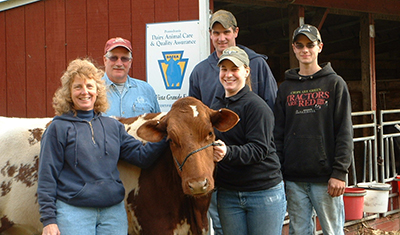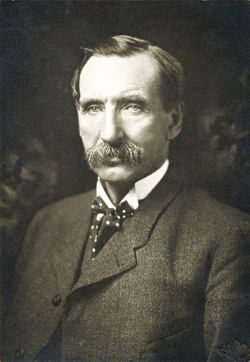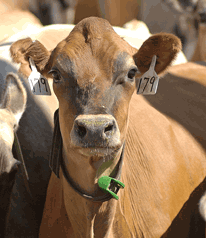Vista Grande Farm honored for beef quality commitment
 At the annual 2010 Cattle Industry annual convention in San Antonio, Texas, Vista Grande Dairy Farm was recognized for its efforts in improving Beef Quality Assurance (BQA) on its operation while successfully encouraging others around them to implement BQA. This year's BQA award was given to one dairy and one beef producer. The winners were selected based on their commitment to beef quality assurance while operating sustainable cattle operations.
At the annual 2010 Cattle Industry annual convention in San Antonio, Texas, Vista Grande Dairy Farm was recognized for its efforts in improving Beef Quality Assurance (BQA) on its operation while successfully encouraging others around them to implement BQA. This year's BQA award was given to one dairy and one beef producer. The winners were selected based on their commitment to beef quality assurance while operating sustainable cattle operations.Vista Grande Farm was founded in 1937 by Phoebe Bitler's parents. Phoebe grew up on the registered Holstein farm, and her 4-H project cows paid for her college degree and also helped to build the foundation for the dairy herd that she and her husband, Dave, began in 1977. On January 1, 2010, they began a partnership with their son, Jesse, operating as Vista Grande Farms, LLC and Vista Grande Cattle Co., LLC.
The dairy farm currently consists of 100 registered milking Holstein cows; 23 owned by the Bitlers, and the balance owned by two young men developing their individual herds; they have placed 30 more milking Holsteins in other young farmers' herds, have a dairy replacement business with 150 females, and farm 600 acres, producing feed crops for the livestock. In addition, the family also performs a variety of custom farming operations, facilitates farm-to-farm dairy cattle sales, and Phoebe conducts educational agriculture tours that showcase what family farms have done to remain viable in the industry.
Vista Grande Farm is located in a densely populated county in southeastern Pennsylvania, and one of its "next-door" neighbors is an industry that employs 5,000 persons. The road that travels between the farm buildings is heavily traveled. This creates challenges for cattle and equipment movement but also provides the opportunity to showcase a tidy farmstead, along with clean and well-cared-for animals to the consuming public.
Phoebe and her family have hosted many “Ag in the Classroom” type events for schools, scouts, seniors and farm-city tours. They have also hosted “Breakfast on the Farm” for the Berks County Chamber of Commerce executive board. These types of events provide opportunities to share the truth about modern animal production, dispelling popular animal rights myths. Vista Grande Farm coexists with its community by offering a transparent view of its dairy practices.
Nominator Paul Slayton, Pennsylvania Beef Council executive director, says, “Phoebe believes firmly that they and their cattle are a team; they work in partnership. They also manage their dairy for increased returns on market cows at harvest by reconditioning prior to selling as "white cows." Currently, they are researching the costs and benefits of selling custom bulk freezer packs utilizing BQA labels and the farm logo to accommodate the changing consumer needs and wants. And she provides extensive training to hired labor. She is very deserving of this award.”
The National BQA award winners are selected annually by a committee of representatives from universities, state beef councils, and cattle industry groups.
For more information about the beef checkoff or BQA program, visit www.bqa.org, www.dbqa.org or www.MyBeefCheckoff.com.
Labels: Beef Checkoff, Beef Quality Assurance










